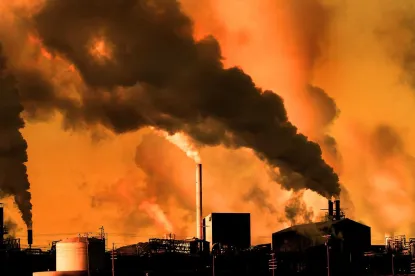The United States is broadening the scope and diversity of its energy mix at a rate and to an extent not seen in a century, if ever. The changes underway provide both important opportunities and critical challenges for owners seeking to repurpose existing assets in a market governed by overlapping federal, state and local regulations.
We briefly summarize below six key considerations for transitioning existing fossil fuel transport, storage and electricity generation assets to new uses.
For a more detailed discussion of the challenges and opportunities addressed below, and much more, watch our recent webinar.
-
An increasingly active antitrust enforcement regime may cause challenges and provide opportunities for market participants. Collaboration and partnering will be critical to successfully transitioning assets given the interwoven nature of the energy industry; the massive capital costs required to undertake large scale infrastructure conversion and construction; the presence of alleged bottleneck facilities; and the limited number of people with expertise in emerging or accelerating focus areas such as carbon capture, low carbon hydrogen production, renewable natural gas and sustainable transportation fuels. Few institutions have the money, the assets and the know-how in all of the relevant areas to undertake these projects on their own; fewer want to bear the risk of doing so, even if they are capable of it. At the same time, federal and state antitrust enforcement agencies have indicated an interest in more aggressively using their authority to investigate and challenge activities that they consider anti-competitive, including those that involve collaborations between or among competitors. They are considering using methods previously unseen, such as the recently proposed Federal Trade Commission (FTC) rule against employee non-compete agreements. Market participants can put in place thoughtful antitrust policies to avoid problematic situations or documentation when partnering with other organizations. They can also use the invigorated enforcement mechanisms to bring attention to their competitors if their behavior is unfairly distorting the market (although, defining what the market is in this rapidly changing industry will become increasingly challenging).
-
There are regulatory barriers to ceasing service to existing facilities. Existing assets often experience restrictions on how they are deployed. Some generation and fuel transport/storage facilities are considered critical infrastructure and are required to remain online in their current form and be available to market participants. Many are owned by entities with rate and service plans that have been approved by federal or state commissions, regional transmission organizations, or market monitors. Changes to those plans would require additional approvals and consultation with stakeholder groups.
-
There are regulatory barriers to introducing new molecules, such as hydrogen, into existing assets. There is no existing federal regulatory regime for transporting 100% hydrogen in pipelines to be used as a fuel. The Federal Energy Regulatory Commission (FERC) has stated that a small amount of hydrogen can be blended into natural gas and transported in pipelines under the existing natural gas transport regulatory regime. It is unclear, though, how much hydrogen blended into the mix is too much under existing rules. Additional environmental and permitting concerns may be introduced by using new molecules in existing assets. For example, hydrogen molecules are much smaller than methane molecules and, thus, may be more likely to migrate from natural gas facilities such as pipelines and geologic structures used for storage. Permitting review and compliance monitoring and mitigation for a hydrogen use case could be more onerous, time consuming and expensive.
-
There are contractual barriers to ceasing service to existing facilities. Many transport, storage and generation assets are locked into long term contracts governing their use and committing them to purchase fuel for their operations. Obtaining project financing and providing cost and revenue predictability requires that costs and revenues be locked in for long periods of time – often multiple decades. Thus, many existing assets cannot exit their current use without breaching agreements and opening exposure to damages claims, specific performance and purchase options/rights of first refusal.
-
There are contractual and technical barriers to introducing new molecules, such as hydrogen or carbon, into existing assets. Because existing assets have been designed for oil and natural gas usage, there are both contractual and technical challenges to converting their use to new molecules such as hydrogen or carbon. Pipeline right of ways and leases covering geological features often specifically identify the matter (e.g., oil or gas) for which the lease is to be used. Changing to a different type of molecule may require consent from many landowners. Even if that consent is received, the existing pipes and associated equipment such as compressors/pumping stations may have to be replaced with equipment that is capable of moving smaller hydrogen atoms. Generation plants have furnaces that are designed to burn hydrocarbons. Some of those furnaces are designed to handle a blend of natural gas and hydrogen; few are designed to burn pure hydrogen. Converting generation assets to burn hydrogen blends or pure hydrogen may require new financing and restructuring of existing financing, offtake, feedstock and operations and maintenance contracts.
-
Assets that become uneconomic may face uniquely challenging distress scenarios as a result of the complex regulatory regimes that they exist in. As traditional energy sources experience changes in use patterns or decreases in overall usage, the fixed cost of extraction, transport and storage will be spread over a smaller user base or a more irregular pattern of demand and may increase per unit cost Federal and state incentives for production and use of low carbon hydrogen as well as carbon capture, use and sequestration may shift the economics of infrastructure use from traditional energy sources to hydrogen and liquified carbon. Some assets are likely to not be convertible to new use at costs that make economic sense and may become stranded before the end of their natural lives. Such otherwise stranded costs may be recoverable through ratemaking processes. But, some assets may have to make use of federal bankruptcy courts, where they will face complex and unsettled competing interests between bankruptcy law and state and federal regulatory oversight.
Steve Peterson and Edward Tillinghast also contributed to this article.








 />i
/>i

